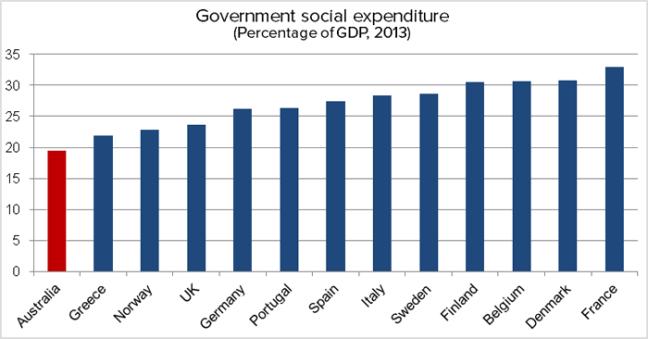Why has the rate of smoking in first world countries declined significantly over the last few decades? Why can we now easily debate the policy options for a further reduction in public harm, such as plain packaging or tax increases? Once the public realised that there was a scientific consensus that tobacco was harmful to health and they perceived that there is a widespread scientific agreement they demanded action. Following on from the previous blog “the 97% consensus” it is apparent that the battle to convince the public that consensus is not the problem, is well on the way to being won. But what then? What matters is not whether the climate is changing (it is); nor whether human actions are to blame (they are); nor whether future climate change brings additional risks to human or non-human interests (it does). In the end, the only question that matters is, what are we going to do about it?
One way of taking action is to make an economic case that being an environmental vandal is bad for business. Look at what’s happening in our nearest neighbour. Indonesia is the world’s biggest destroyer of forests and four multinational corporations — APP, APRIL, Wilmar and Golden Agri Resources — have been responsible for much of it. Until recently these mega-corporations were considered environmental pariahs, but suddenly things seem to be changing, with all four proclaiming “no deforestation” policies. What gives?

Golden Agri Resources led the way, announcing a no-deforestation policy in 2011. Under growing pressure, its sister company APP (Asia Pulp & Paper) followed suit early last year. APP’s metamorphosis was especially stunning. For years, APP had thumbed its nose at critics while bulldozing ever more forest. This was easy for it to do because APP is largely a privately held corporation and because countries such as China and India — which generally don’t fuss too much about the environment — snapped up much of its pulp and paper products.
But gradually, the tide turned against APP. Its critics mounted, its reputation turned increasingly toxic, and it began to lose more and more market share and an increasing number of companies refused to conduct business with them. Even if we’re dubious about their motives, their initiatives could represent an important wave of corporate realpolitik in our increasingly eco-conscious world. As such, they might become models for other natural resource-exploiting companies and business sectors internationally. Beyond this, the four corporations have large land interests globally, so one can’t ignore the potential upside of their new policies alone.
And if you haven’t heard about the growing campaign for fossil fuel divestment, and what it means for both your retirement funds and for the global economy, it’s time to pay attention – because now even the World Bank has come on board when it announced it would not fund any new coal power plants “except in exceptional circumstances”. Similar restrictions on new coal generation investments have now been announced by US, Scandinavian, European and UK development banks.
In January 2014, 17 US philanthropic groups with combined assets of about US$1.8 billion promised to sell their investments in fossil fuel companies and instead put their money into clean-energy technology.
“The magnitude of the climate crisis requires that we no longer conduct business as usual,” the Wallace Global Fund’s executive director Ellen Dorsey told reporters. “If we own fossil fuels, we own climate change.”
That US announcement came just days after Norway’s oil-funded sovereign wealth fund – which owns around 1% of the world’s stocks – revealed that it has already halved its investments in coal.
For Australians the answer is a no brainer! The national compulsory superannuation scheme has resulted in a vast aggregate of capital, some of which is invested in companies that are major polluters. For instance, Pacific Aluminium, a subsidiary of Rio Tinto, has burnt 850,000 tons of bunker oil in its refinery at Nhulunbuy each year for 45 years, generating, in addition to massive levels of PCB, nearly 2 million tpa of GHG pollution, is quite a popular investment with superannuation funds.
GetUp! should analyse the portfolio of the industry super funds, construct a list of all the companies that engage in pollution and campaign for all members of those funds to DEMAND the fund divest all the shares it has in fossil fuel companies before their businesses suffer.


 ven to this day.
ven to this day.

